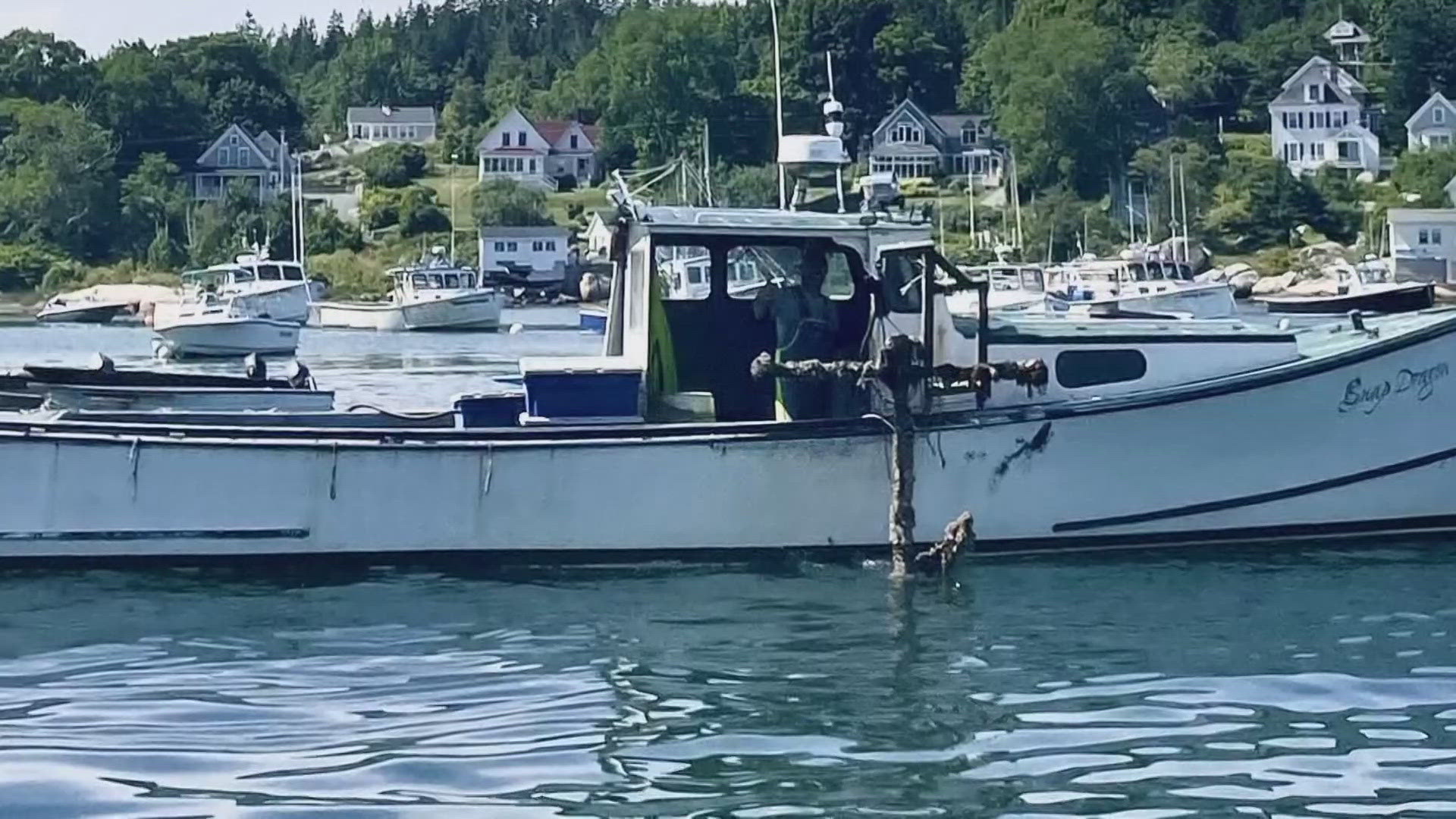STONINGTON, Maine — A Stonington lobsterman has discovered a historic anchor in Penobscot Bay.
It was an ordinary day for Mike Billings, checking traps out on the water, until he saw a buoy barely peeking out of the water and pulled on it.
"It literally felt like somebody was playing tug-of-war with me down there, and I was like this is different," Billings said.
He started hauling in the mysterious catch and then, "I got this massive friggin' anchor," Billings said in a video he took as he hauled the anchor.
"It took me a couple of minutes to gather my thoughts because I couldn't believe it," he said.
Billings pulled in a 6-foot barnacle-encrusted anchor that Jon Johansen, historical researcher and president of the board of directors of the Penobscot Maritime Museum, said is about 150 years old.
"This anchor's probably mid-1800s, maybe even late-1800s," Billings said.
Now many people are speculating that Billings may have reeled in an artifact from the Royal Tar, a famous ship that caught fire and sank in Penobscot Bay in 1836.
"The old-timers that know something, they say the Royal Tar sunk right there," Billings said.
The Royal Tar carried passengers and circus animals and crashed somewhere in the bay during a storm.
But Johansen said it's unlikely that the anchor came from the ship.
"An anchor like this really probably came from a schooner stuck in a cove," Johansen said.
For Billings, the debate around its origins is what makes it so unique.
"It's a huge mystery that would be great to solve," he said. "The thing that's really great is it's sparked so much interest and curiosity in people."


Whether or not the anchor came from the Royal Tar, it’s a part of Stonington’s rich maritime history.
"Our lives are on the water," Linda Nelson, Stonington economic and community development director, said. "So immediately when this historic anchor was brought up as a vivid example of the history of Stonington being a central place on the water here in Maine, I was very excited about it."
Billings said the anchor serves as a symbol of the resilience of Stonington’s fishing communities, so he wants to donate it to the town.
"I feel like it's not just my anchor. This anchor belongs to everybody that's been born and raised and grown up on this island," he said.
Billings has been working to preserve the artifact so it can be displayed and won't deteriorate.
He will continue to work with historians to try to uncover the origins of the anchor.

